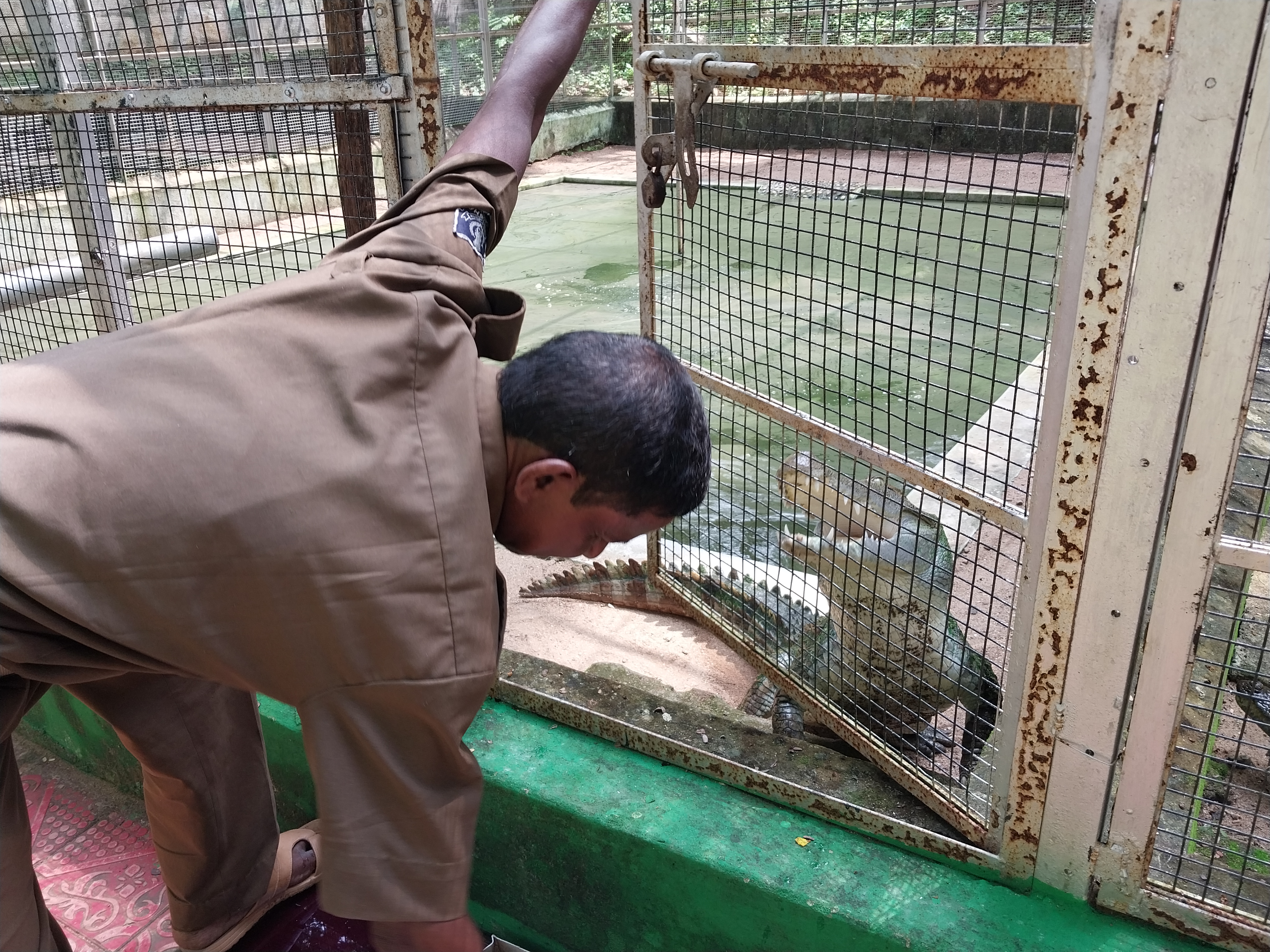
Trained watchers keep a close watch along the Mahanadi river gorge in Satkosia tiger reserve for conservation of a critically endangered species, writes Deepanwita Gita Niyogi
Manas Ranjan Tripathi’s day begins in his khaki uniform. An ardent gharial watcher, he has been engaged by the forest department since 2008 and his job is to monitor the reptiles in the Mahanadi river.
The fish-eating gharial is a critically endangered species according to the International Union for Conservation of Nature. They are found only in a few places across India and Nepal.
“Armed with a binocular I look out for gharials in the river in a speed boat four to five days a week. I also take photos whenever I spot them. There are gharials as well as Marsh crocodiles in the Mahanadi which cuts across the Satkosia Tiger Reserve,” Tripathi said.
Like him, there are four other watchers. All of them cover a distance of about 20 km individually while tracking gharials. The watchers are responsible for monitoring their population.
The 900-km long Mahanadi river in east central India, which originates in neighbouring Chhattisgarh, forms a spectacular gorge in the Satkosia tiger reserve, which has been recently declared a Ramsar site. The gorge is the natural habitat of not only gharials and Marsh crocodiles, but also of the critically endangered Batagurkachuga turtle and the endangered Indian Skimmer bird.
Recovery plan for gharials
At the gharial conservation centre at Tikarpada inside the Satkosia tiger reserve, there are a few gharials kept inside cages for tourists. Satkosia is the only place in Odisha to have gharials. Besides, gharials are also found in the Chambal river.
As gharial babies get washed away during heavy monsoon floods, it is important to protect them. So, after they are hatched at the Nandankanan Zoological Park in Bhubaneswar, the animals are released only after they grow eight feet in size. Then the chance of getting washed away by floods is minimal.
Biologist Shailendra Singh of Turtle Survival Alliance – India said that Nandankanan has a breeding group of gharials and the conservation story of Satkosia starts from there. “When babies are hatched, they are released in the Mahanadi after a certain period. Though they are naturally found in the river, their population dwindled in the past mainly due to overfishing. The babies also sometimes drown when water is released from dams. But now there is adequate patrolling to protect the species.”
Since 2018, 18 gharials have been released in the river as part of the recovery programme solely taken up by the zoo authorities. “Altogether, 28 gharials were counted in 2020-21 and in 2021-2022 there were 32, ” Tripathi added.
Satkosia Tiger Reserve divisional forest officer Saroj Panda said in the past four decades, natural breeding did not occur. So, gharials were released in the river to augment the population. However, in the past two years natural breeding has taken place.
Sometimes individual animals are rescued from downstream. About 15 animals were taken to a safe place after the monsoon started this year. A total of 31 hatchlings were also born due to natural breeding in the gorge.
At the centre, about 50-100 visitors come to watch gharials and Marsh crocodiles on a daily basis. It was set up in 1972-73. In 1982, a huge flood submerged the place.
For feeding the animals, Purushottam Nayek is in charge. He feeds them fish by opening the cages every morning around 11am. Apart from gharials, there are also Marsh crocodiles and Batagurkachuga turtles. Water is cleaned every 15-30 days.
Apart from the men, women too are in charge here. A woman named Kumari Jani is a gharial tracker. She joined in 2015 after the demise of her husband. She travels in a boat at daytime in the Mahanadi along with her friend Anita Behera.
As the boat sped along towards the narrow part of the Satkosia gorge, Tripathi informed that this area has more gharials whereas the broader riverine space has Marsh crocodiles. Sometimes, the crocodiles are seen basking in the sun on rocks. The river has 125 Marsh crocodiles.
Intense patrolling
Apart from daytime patrol, the watchers are also active at night. Night patrol usually starts at 5 pm or even at 7pm. Sometimes, it is on at midnight too.
“Gharial reintroduction plan has been on since the past four years. It is a good sign that the number has risen from 28 to 32. As they travel downstream, it is imperative to rescue them from floods, especially the young ones,” said Tripathi whose patrolling hours range for almost three hours. He is a resident of Angul district.
As the boat entered the narrow part of the Mahanadi, sandy banks and vast stretches of sand bars came into view along with heavily forested hills dotting both sides of the river.
As most visitors who end up in Satkosia enjoy boat rides for the gorge and spotting crocodiles and gharials, staying in Tikarpada is the obvious choice. Keeping this in mind, a nature camp was set up here 15 years back and is entirely community managed. The Tikarpada eco-development committee is in charge here. Dileshwar Nayek, forest guard of Tikarpada section, said that the forest department handed over the place to the people for livelihood options. There are 10 tents where about 25 people can stay. Food is also served. There is a plan to introduce a Canter vehicle in the winter for safaris.













